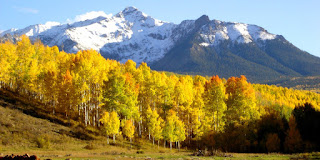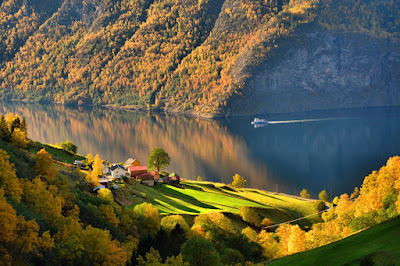
As I write this, in the northern parts of our globe Nature is putting on one of its most spectacular displays – colorful fall foliage. As a child in Virginia, this was a magical time for me. The crisp air, the smell of burning leaf piles and fireplaces lighting up, the beauty of the trees, the excitement of all the Fall holidays – it was all just so exhilarating. Now that I live in the Sonoran Desert, I am hopelessly nostalgic at this time of year.
 As the season heads toward winter, spurred on by shorter days, trees in cooler climates begin releasing hormones that cut off the chlorophyll to their leaves as they prepare to overwinter. The gorgeous colors in the leaves, which had been hidden by the chlorophyll up to this point, are made delightfully visible again. The chemicals that cause specific colors in leaves do the same thing for other plants. The carotene that makes carrots orange is also responsible for making certain tree leaves go orange. Anthocyanins turn leaves red, but cause fruits like blueberries and grapes to turn purple-blue. Evergreens keep their green on in winter due to their uniquely shaped needles, which are compact and watertight. If they do drop leaves it will be in the spring, when older leaves can turn yellow and fall off.
As the season heads toward winter, spurred on by shorter days, trees in cooler climates begin releasing hormones that cut off the chlorophyll to their leaves as they prepare to overwinter. The gorgeous colors in the leaves, which had been hidden by the chlorophyll up to this point, are made delightfully visible again. The chemicals that cause specific colors in leaves do the same thing for other plants. The carotene that makes carrots orange is also responsible for making certain tree leaves go orange. Anthocyanins turn leaves red, but cause fruits like blueberries and grapes to turn purple-blue. Evergreens keep their green on in winter due to their uniquely shaped needles, which are compact and watertight. If they do drop leaves it will be in the spring, when older leaves can turn yellow and fall off.
Spectacular autumn foliage is not only occurring in North America right now, of course. All across
Europe, they are being treated to their own version of this Nature’s gift. In Scandinavian countries, you can even see the Northern Lights after a day of viewing autumn leaves –a Nature double-feature for sure. Russia, with its immense tracts of forests, has leaf-peeping for days – literally – a trip across the country (Moscow to Vladivostok) by train takes 7 days. If you are brave and hardy enough, it will take you a minimum of 11 days to drive. In St. Petersburg, they call it Golden Autumn (a term attributed to the beloved poet Pushkin) and it looks amazing – see more on St. Petersburg here and other Russian Fall destinations here.
 While all this is going on in the northern half of the world, in the southern half it is spring going into summer. Autumn in those places goes from March into May. If you think of deserts and beaches when you think of Australia, you’re right. They have a lot of that. But they also have some majestic mountain ranges. The Dandenong Ranges, not far from Melbourne in the southern part of the country, are not the largest mountains in Australia, but they are appreciated for their display of colors. Their peak color season is March. Here is an article on that beautiful place and here is one on other places for leaf-peeping Aussie style. On another continent in the southern hemisphere, the Patagonia region of Argentina and Chile, draws foliage tourists from near and far. Their peak time is April. See some of that (including a video) here.
While all this is going on in the northern half of the world, in the southern half it is spring going into summer. Autumn in those places goes from March into May. If you think of deserts and beaches when you think of Australia, you’re right. They have a lot of that. But they also have some majestic mountain ranges. The Dandenong Ranges, not far from Melbourne in the southern part of the country, are not the largest mountains in Australia, but they are appreciated for their display of colors. Their peak color season is March. Here is an article on that beautiful place and here is one on other places for leaf-peeping Aussie style. On another continent in the southern hemisphere, the Patagonia region of Argentina and Chile, draws foliage tourists from near and far. Their peak time is April. See some of that (including a video) here.
So, if you had the time, resources, and inclination, you could travel around the world enjoying autumnal foliage. You could go Down Under in March-April, visit southern South America in April-May, and then spend the summer months in the middle of the globe where the daylight stays mostly the same year-round and trees don’t change. Come September, you could head north and begin the leaf-peeping process in New England. It sounds like a wonderful way to live to me.
Take Care.
Submitted by Pam











No comments:
Post a Comment